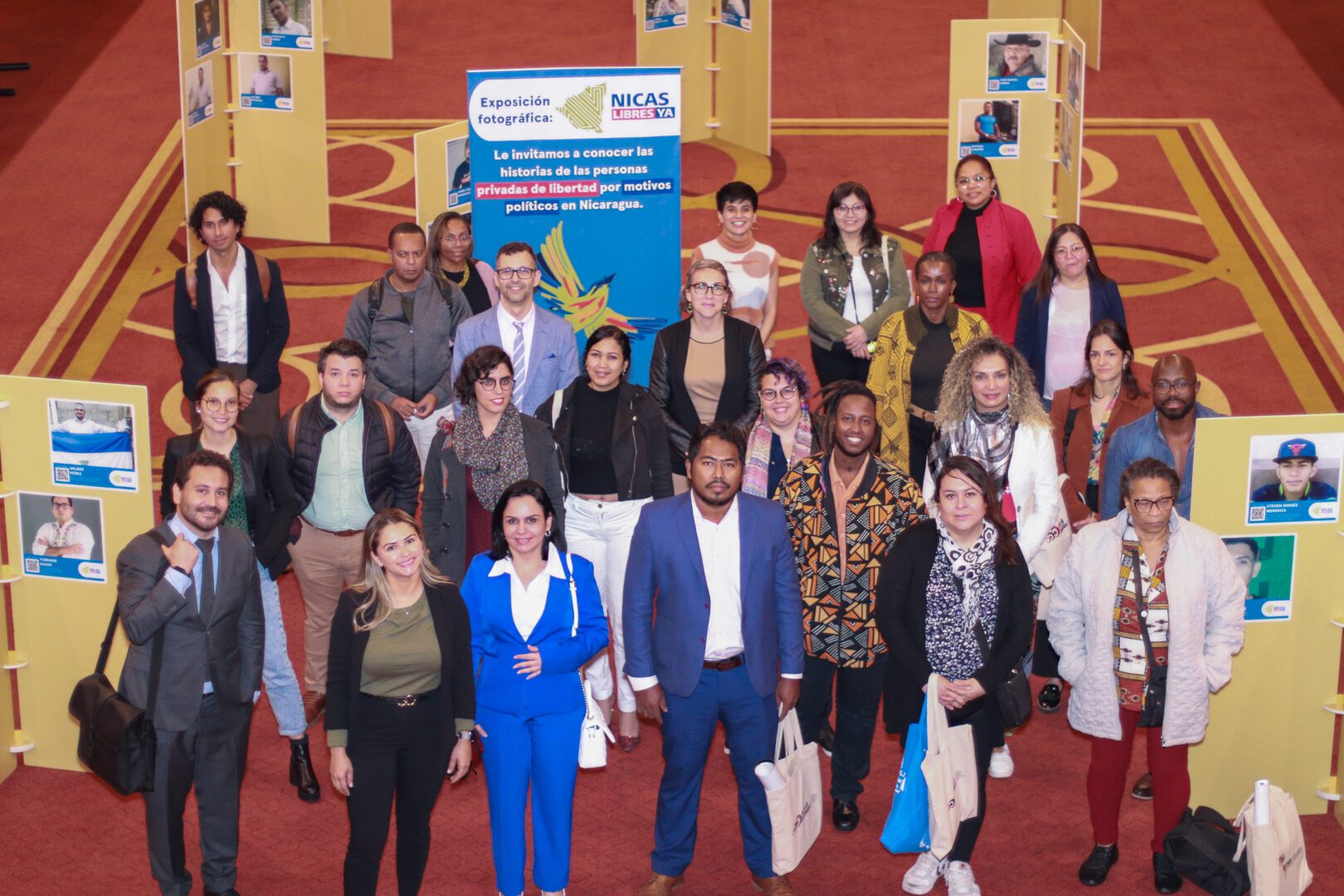Trans Memory: The Intersectional Murder of Trans People in Latin America
On Transgender Day of Remembrance, we highlight that hate crimes against trans people are in relation to race, class, and gender. The majority of victims are black trans women, migrants, […]

On Transgender Day of Remembrance, we highlight that hate crimes against trans people are in relation to race, class, and gender. The majority of victims are black trans women, migrants, and sex workers.
Washington D.C., November 20, 2022. In the world, there are people who die as a result of transphobia and indifference, many in anonymity and impunity. Today, on Transgender Day of Remembrance, The Institute on Race, Equality, and Human Rights (Race and Equality) wants to commemorate trans lives by preserving memory and vindicating the right to equality, non-discrimination, and a life without violence that is often motivated by hate.
November 20 was marked on the calendar in tribute to Rita Hester, a trans woman of African descent who was cruelly murdered on November 28, 1998, in her Boston apartment, as narrated by NBC News, two days before her 35th birthday. After the horrific event, Gwendolyn Ann Smith, another trans woman and American activist, launched a vigil in her name, which gathered around 250 people. By then, several LGBTI people in the United States were killed, many of which were black trans women.
Rita Hester became a symbol of memory and recognition for all trans people who were killed for “failing” to meet social expectations and gender norms.
These murders have a racial component
As every year, on the eve of November 20, TGEU’s Trans Murder Monitoring (TMM) published its annual report on murders of trans and gender-diverse people worldwide. According to the data, between October 1, 2021, and September 30, 2022, there were 327 murders worldwide, of which 95% of the total number of people killed were trans women or trans-feminine and more than half were engaged in sex work. In addition, the report notes that 35% of the people killed in Europe were migrants. Moreover, the region that has been reporting the most in recent years is Latin America and the Caribbean, where 68% of deaths are concentrated.
Other important factors that the report incorporates are race and age. Trans people of color account for 65% of recorded murders and most murdered victims were between the ages of 31 and 40. The most common place where the murders occurred was the street followed by the victim’s own residence. It is worth mentioning that many of the murders continue to go unreported or are misclassified. In most countries, the States do not have registration systems that include ‘gender identity or sexual orientation’ categories leaving human rights organizations to collect this data.
Cuba and Nicaragua: There is No Information on Authoritarian Regimes
While some civil society organizations in the region make efforts to collect and notify crimes committed against trans and gender-diverse people, in authoritarian governments such as Cuba and Nicaragua, the political situation makes it extremely difficult. LGBTI+ and human rights organizations in general are persecuted for denouncing human rights violations.
Although there is a 2016 study by the National Statistics Office of Cuba (ONEI) which articulates that there are more than 3,000 transgender people living on the Island, there is no official system that records violence against them. In addition, LGBTI+ organizations cannot freely collect this information. Nicaragua is in a similar situation. Although there is no official record of murders, the latest report from the Observatory of human rights violations of LGTBIQ+ people in Nicaragua – a project of the La Corriente Collective indicates that during the second quarter of 2022, 10 trans women and 1 gender binary person were victims of violence. However, the number of trans people killed is unknown.
Brazil, Mexico, and Colombia: The Most Dangerous Countries in the Region for Trans People
At the beginning of this month, some residents of Ibicaraí, in the south of Bahía (Brazil), helped Kauana Vasconcelos, a 16-year-old trans adolescent, who had been stabbed and abandoned in a vacant lot. She was taken to the Arlete Marón Municipal Hospital, but did not survive. The identity of the attacker is unknown.
According to figures collected by the Trans Murder Monitoring, Brazil holds 29% of murders in the world, the highest percentage globally. Of 327 murders in total, 96 occurred in Brazil. Last year, the National Association of Transvestis and Transsexuals (ANTRA) reported 140 murders of trans people, of which 81% were black people and 78% of the total were sex workers. In January next year, for the month of trans visibility, ANTRA will release updated figures on the murders of trans people.
In Colombia, in July of this year, Ana Paula Albino was assassinated in her own home. She was violently attacked with a sharp weapon and then suffocated. The murderer, who was identified by security cameras, is being prosecuted. After Brazil (96 murders) and Mexico (56 murders), Colombia is one of the most dangerous countries in the region for trans people. So far this year, there is a record of 28 trans people murdered.
Justice for Seb and Rodri
The entire world was shocked by the suspicious death of Rodrigo Ventocilla while he was in police custody in Indonesia. He and his husband Sebastian Marallano, two young Peruvian activists, traveled to Bali on August 6 of this year to celebrate their honeymoon. In Indonesia, Rodrigo was arbitrarily detained after Denpasar airport security officers saw that his identification document differed from his gender expression. He was inspected and accused of drug trafficking when the security officers found medication for Rodrigo’s mental health among his belongings, even though he had a medical prescription. Although there were no charges against Sebastian, both were taken into custody by local police. On August 9, the two were transferred to the Police Hospital for suffering an alleged decompensation, however, the doctors did not perform blood or urine tests due to lack of assets, as indicated. Rodrigo’s classmates from the Harvard Kennedy School, since he was doing a master’s in Public Administration, as well as his lawyers, were prevented from seeing them. Rodrigo died on August 11 in circumstances that the Indonesian authorities have not been able to clarify. In total, they spent 5 days in custody. Families are denouncing extortion and torture for transphobia and racism.
In Peru, it is uncertain how many trans people are killed, since crimes based on prejudice are not classified as such by the Peruvian justice system. Many trans and LGBI+ people are even criminalized, pathologized, and discriminated against by State institutions. The Trans Murder Monitoring has reported only 3 deaths this year. Hate speech and negative and prejudicial media coverage fuel stigma and social exclusion against trans people.
Dominican Republic
Earlier this month, the organization TRANSSA (Trans Siempre Amigas) issued a joint statement with the Network Sin Violencia LGBTI and the Observatory on Human Rights of Trans Persons (in Spanish ODHPT) to alert authorities of the disappearances and murders of LGBTI people in the country. “We demand that the authorities give priority to this problem, we know that they have increased the number of people in the department of missing persons, but the number of personnel and technological resources to find answers quickly and effectively is still insufficient…” So far this year, TRANSSA has recorded the death of one trans person.
Urgent Measures
From Race and Equality, we remind States of their obligation to respect and guarantee the rights of all people without any discrimination, so we made the following recommendations:
- Systematically collect data on acts of violence and murders against transgender persons, disaggregated by gender identity, sexual orientation, ethnic-racial identity, and age.
- Adopt the necessary laws and policies to guarantee the recognition, respect, and inclusion of trans and gender diverse people.
- Establish special mechanisms to respond to acts of violence and murders against LGBI and trans people, which lead to the clarification of the facts and the punishment of those responsible, as well as the establishment of guarantees of non-repetition.
- Monitor and publicly sanction transphobic discourses reproduced in public and private institutions and in the media that incur calls for discrimination and violence against the trans population.
- Promote, through the institutional framework and official channels, a campaign to educate and raise awareness about sexual orientation and gender identity among the general population, public officials, and public service personnel, to generate a context of recognition and respect for the integrity and life of LGBI, trans, and gender diverse people.

